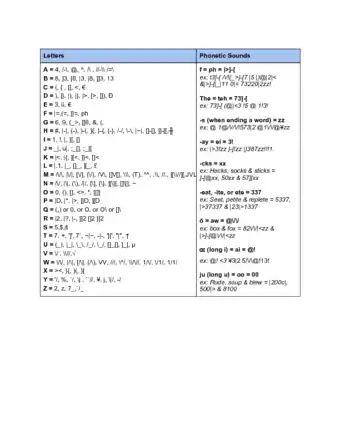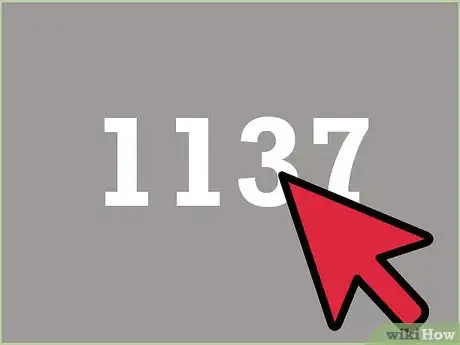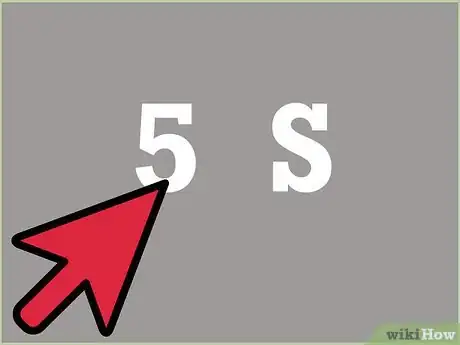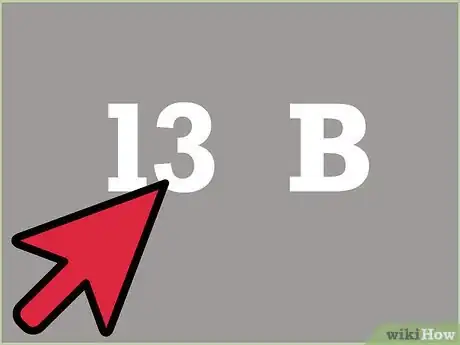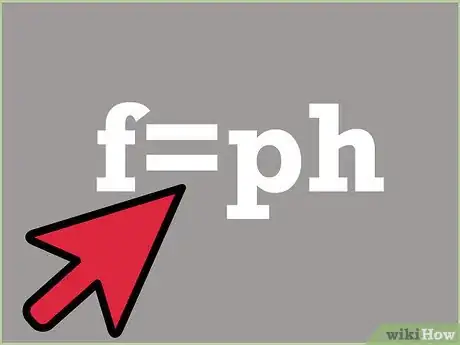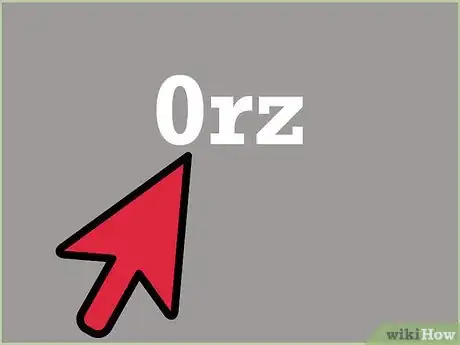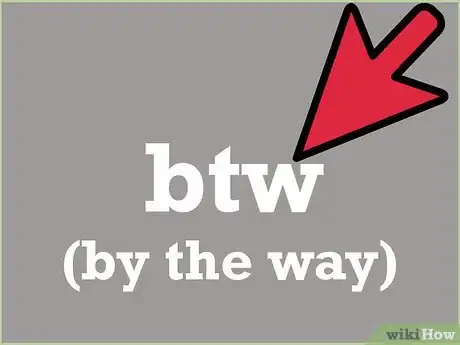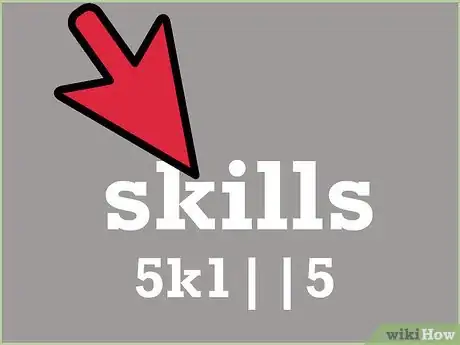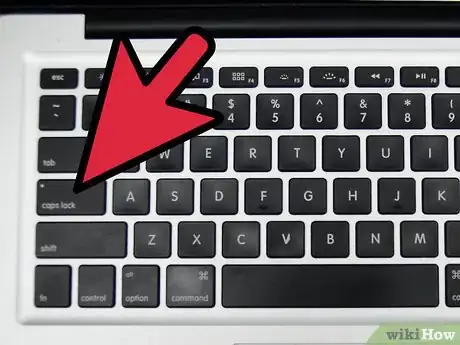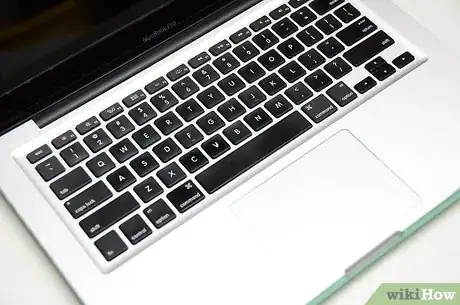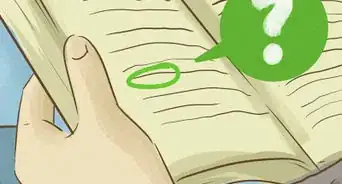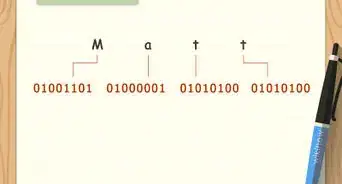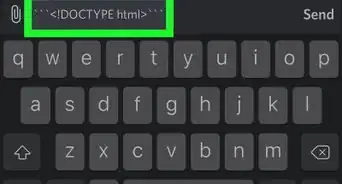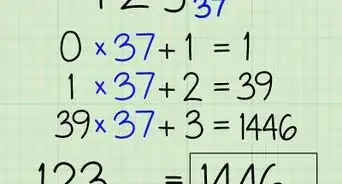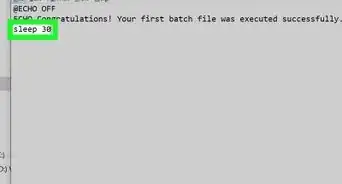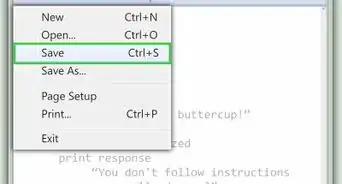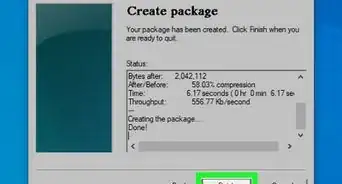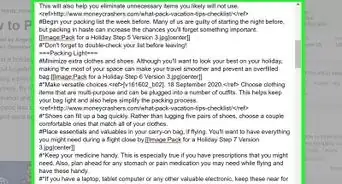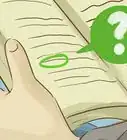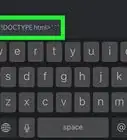wikiHow is a “wiki,” similar to Wikipedia, which means that many of our articles are co-written by multiple authors. To create this article, 117 people, some anonymous, worked to edit and improve it over time.
This article has been viewed 1,064,794 times.
Learn more...
LEET (1337) is a written language or cipher used in online gaming, e-mails, text messaging, tweeting, and other electronic communication. The root of the term "leet" is the word "elite"--translated as 31337--and 1337 was initially developed as an exclusionary language: a way to encode text so that messages could only be read by the initiated. The defining characteristic of 1337 is substitution of symbols and numbers for letters (for example, in the term "1337," 1=L, 3=E and 7=T), but the language has also developed to include intentional misspellings, phonetic spelling, and new words. If you want to familiarize yourself with 1337, or if you're just curious about it, this article will explain the basics of how to read and write in this ever-changing language. The license plate on the car says H4X0R2, or Hackers.
Steps
1337 Samples
-
1Keep an open mind. Like all languages, 1337 isn't static. Reading 1337 can be difficult and the language may not always appear to make sense, especially since new words, random capitalizations and alternative spellings proliferate. You can learn basic guidelines for 1337, but there are no rules, and individuals alter the language to suit their own needs. It is important to keep in mind, however, that the same can be said for any language. All languages are living and changing; 1337 is simply very alive and changing quickly.
-
2Think of the symbols as shapes and not as their meanings. For example, a 5 looks a bit like an S, as does a $, so either of these symbols (among others) could be substituted for an S. When writing in 1337, you can follow guidelines such as those below, you can use the same substitutions of symbols for letters that you see other people using, or you can make up your own substitutions.Advertisement
-
3Combine two or more symbols and numbers to make single letters, such as |= for F or |3 for B. Again, you will find some frequently-used combination substitutions, but don't be afraid to be creative when you're writing, and don't be discouraged if you come across something unfamiliar when you're reading.
-
4Pay attention to context. If you can't figure out the meaning of a symbol, try to guess its meaning based on the letters (symbols) around it. This is a bit like playing hangman or Wheel of Fortune: you try to figure out the missing letter or letters by looking at the surrounding letters. The same can be said of whole words. If a word doesn't make sense, you might not be translating it right, or it might be unfamiliar slang. Try to guess its meaning by looking at adjacent words or the sentence which contains the word.
-
5Familiarize yourself with common phonetic replacements. In addition to symbol-for-letter replacement, 1337 can include letters which substitute for other letters, sounds or words. For instance, f = ph, cks = xx, s = z or r = are. This practice is certainly not unique to 1337--you don't have to be a 1337$p34|<3r (leetspeaker) to figure out the phrase "i luv u."
-
6Brace yourself for flagrant misspellings. Some, such as "kewl" (for "cool") are phonetic replacements, while others such as "teh" (for "the), or "ownt" and "pwned" (for "owned") have just grown into the language as an inside joke. Other variations, such as omission of vowels, are also common. "Creative" spelling is just part of 1337.
-
7Learn new grammatical structures. 1337 users often deviate from standard English grammatical structures, and they have invented some grammatical devices of their own. For example, the suffix "0rz" can be added to a word to make it plural or to add emphasis, as in "r0xx0rz" for "rocks," where "r0xx" would substitute for "rocks". Another common suffix is "3d," used to indicate the past tense such that "rocked" becomes "r0xx0r3d," as is "7h47 r0xx0r3d" ("that rocked"). It has also become something of a convention to change verbs to nouns by preceding the verb with "the" or, especially, "teh."
-
8Embrace acronyms. Though technically just chat-speak, the use of acronyms and abbreviations is common in 1337. There are a tremendous number of acronyms used in electronic communication, among them BTW ("by the way"), TTYL ("talk to you later"), and the ubiquitous LOL (generally meaning "laugh out loud"). Even the meaning of unfamiliar acronyms will probably become obvious if the letters are examined in context, for example ROFLBBQCOPTER ("ROFLBBQCOPTER") or ROFLB52BOMBER ("ROFLB52BOMBER"), and you can always make your own.
-
9Expand your vocabulary. Though most of the "new" words in 1337 are simply misspellings of English words ("taht", for example, or "pwn"), some are actually new coinages, such as "nooblet"--this could be written, for example, as "n008137"--which denotes a "noobie," or the 'newguy' |\|3\/\/|3 (newb) someone new to 1337 or something else. The best way to learn the vocabulary is to read a lot of 1337.
-
10Adapt to inconsistency. Sometimes, you'll see people with 1337 "skillz," sometimes you'll see "5k1||5," and sometimes "$c1llz0r3d." Sometimes all three will be the same person writing in the same passage. There is a lot of inconsistency in 1337--get used to it.
-
11cApItalizE at random. Random capitalization is arguably an integral part of 1337. Some writers employ a consistent method, such as capitalizing all letters except vowels or only ending letters, but many simply capitalize letters (where they are not replaced by symbols), whenever they want.
-
12Practice reading 1337 and study the chart below. The only way to really learn 1337 is to absorb it by reading and writing a lot of it. If you read through 1337 $|o3/-\|< |=/-\57 3|\|0U9|-| u
Community Q&A
-
QuestionCan I get banned for using 1337 on Roblox?
 Community AnswerNo, you cannot, unless you swear, bully, or say inappropriate things with it.
Community AnswerNo, you cannot, unless you swear, bully, or say inappropriate things with it. -
QuestionHow do I write the "@" symbol?
 Community AnswerPress and hold the shift key, then press 2 on your keyboard. You should be able to locate the symbol on your keyboard.
Community AnswerPress and hold the shift key, then press 2 on your keyboard. You should be able to locate the symbol on your keyboard.
1337 Chart
-
Note:
- The commas are added to separate symbols
- The symbol | (Example: B = |3 ) is a "down-slash", or "pipe", and not a lower-case "L" or capital "i"
- The symbol ` (Example: T = 7` ) is not a standard apostrophe, but is a "Grave Accent" and is found on the tilde (~) key
- Also keep in mind that the use of /-/ for H for example, aren't used nearly as often as the normal letter in a quick conversation. To write an entire sentence this way would take three times as long, thus the quicker single symbol or letter substitutions are more often used.
- A = 4, /-\, @, ^, /\ , //-\\ /=\
- B = 8, ]3, ]8, |3, |8, ]]3, 13
- C = (, { , [[, <, €
- D = ), [}, |), |}, |>, [>, ]]), Ð
- E = 3, ii, €
- F = |=,(=, ]]=, ph
- G = 6, 9, (_>, [[6, &, (,
- H = #, |-|, (-), )-(, }{, }-{, {-}, /-/, \-\, |~|, []-[], ]]-[[,╫
- I = 1, !, |, ][, []
- J = _|, u|, ;_[], ;_[[
- K = |<, |{, ][<, ]]<, []<
- L = |,1, |_, []_, ][_, £
- M = /\/\, |\/|, [\/], (\/), /V\, []V[], \\\, (T), ^^, .\\, //., ][\\//][,JVL
- N = /\/, |\|, (\), /|/, [\], {\}, ][\][, []\[], ~
- O = 0, (), [], <>, *, [[]]
- P = |D, |*, |>, []D, ][D
- Q = commas are necessary: (,) or 0, or O, or O\ or []\
- R = |2, |?, |-, ]]2 []2 ][2
- S = 5,$,š
- T = 7, +, ']', 7`, ~|~, -|-, '][', "|", †
- U = (_), |_|, \_\, /_/, \_/, []_[], ]_[, µ
- V = \/ , \\//,√
- W = \/\/, |/\|, [/\], (/\), VV, ///, \^/, \\/\//, 1/\/, \/1/, 1/1/
- X = ><, }{, )(, }[
- Y = '/, %, `/, \j , ``//, ¥, j, \|/, -/
- Z = 2, z, 7_,`/_
Warnings
- Calling those who make fun of you for it "|\|0o8|3t5" is (while funny) not recommended anywhere that you can be booted from.⧼thumbs_response⧽
- Creativity is fun and is rewarded in 1337 circles, but keep in mind that 1337 is still primarily a means of communication. Avoid making your 1337 writing completely incomprehensible. If nobody but you can read what you are writing, what's the point? (Or, what if that is the point?)⧼thumbs_response⧽
- Be prepared to get flamed for using 1337 speak, as many see it as a vile form of communication.⧼thumbs_response⧽
- 1337 is pretty harmless, but be prepared to get made fun of for using it!⧼thumbs_response⧽
- Use of 1337 on forums tends to annoy people and can get you banned. It is an indicator of your ignorance on most forums. Also, using 1337 to bypass spam filters is severely frowned upon. (Actually, it's the spam that's frowned upon)⧼thumbs_response⧽
- Make sure you do not forget real writing and how to use grammar and spelling correctly.⧼thumbs_response⧽
